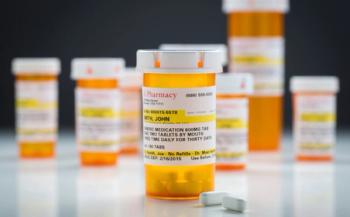
Medical Affairs’ Search for Meaning
A description of the changing role of the medical affairs function in pharmaceutical companies and the subsequent evolution to a never ending measurement of the output of medical affairs. How to overcome this quest for sometimes meaningless numbers to justify its existence.
“Between stimulus and response there is a space. In that space is our power to choose our response. In our response lies our growth and our freedom.”
In the past in pharmaceutical companies, the commercial function was the only lead in setting and driving the strategy. Medical affairs, in addition to the license to operate function, provided mostly on-demand medical information services, as well as support on an adhoc basis in key external experts’ engagement and internal and external medical education. The key performance indicators (KPIs) and the resulting perceived value were related to these support activities, and were expressed in inconsequential metrics, including but not limited to the number of visits to external experts, the number of evidence generation activities, and publications.
Innovative specialty and ultra-specialty pharmaceutical companies have recently invested heavily in expanding the medical affairs function, due to the complexity of therapeutic areas and medicines, with more and more medical affairs colleagues working in the field, while at the same time improving the quality and impact of those medical teams. They, in their essence, are internal experts employed by the company. It changed the scope and value of medical affairs dramatically. From our perspective, however, the purpose of being (raison d’etre) for medical affairs is to ensure the best patient outcomes via shaping the practice of medicine through evidence generation and scientific exchange activities, and enhancing patient access to the best available treatment by demonstrating the value of that treatment to payers, physicians, and patients.
The only way to achieve best patient outcomes for the medical affairs function is a true peer-to-peer partnership with external experts, scientific societies, academic institutions and research groups, as well as the entire medical community involved in patient care. In order to become a partner, you need to be considered as a peer in a specific therapeutic area.
But, what can make a good pharmaceutical medical affairs professional a peer to an external expert, in addition to in-depth scientific, clinical, and medical knowledge in the relevant therapeutic area and medicine(s)? The ability to understand patients’ needs, think across therapeutic areas, assess clinical value, analyse risk versus benefit, and exploit technological advances.
In addition, a sustainable, trustful, and successful partnership is only possible in case external experts engage with us as peers, have confidence in our unbiased data, look to us for our medical expertise and scientific reference, want to involve us and collaborate with us in evidence generation, policy shaping, regulatory and patient access activities, as well as listen to us at scientific forums, because we own the science they value. Medical affairs has a huge ethical responsibility in creating this trusted and sustained partnership. There are no alternative facts or different truths in science and medicine.
Medical affairs is the only function to systematically provide the physician’s perspective to the company.
In turn, higher investment in headcounts and quality, with a specific focus on external scientific exchange and education activities (by MSLs), the quality of the output and the greater responsibility regarding evidence generation activities to fill evidence gaps, has led to an increased demand from the business to measure the value of medical affairs.
Many companies developed KPIs, measuring the number of external engagements with targeted experts per quarter, the number of publications in peer-reviewed journals based on evidence generation activities and the number of medical education events or advisory boards. These numbers are extremely important for internal tracking and benchmarking but do not fully reflect the real value of the leadership role of medical affairs and on the contrary result in a “KPI trap,” where medical affairs produces ever bigger dashboards that do not reflect the true value, leading to a misunderstanding and a perception of medical affairs as a cost center.
Let’s come back to the pragmatic challenge of the medical affairs function having to show the value and impact to the business first, and next to the patients, physicians, and payers. Relevant value measurements should be related to mainly two deliverables and supplement traditional numerical KPI’s.
- Access to our medicines for the right patient at the right time;
- Shaping medical practice based on evidence generated in collaboration with external experts and payers to optimize patient treatment and outcomes.
Which relevant measurements should be considered in the future? With respect to quantitative and qualitative KPIs, we do not think it is an either or question. Great MSLs and Medical Teams will need both quantity and quality. It doesn’t matter how good your science is, if you are not meeting regularly with the KEEs your impact will be limited. We believe “traditional KPIs” such as number of publications and advisory boards or number of field visits and interactions per MSL should still be measured and put into a dashboard to understand and benchmark the quantitative output of what we do; but these, what we will now define as “traditional numerical KPI’s” should not be used as the justification of medical affairs function and its activities.
“Value and impact measurements,” like documented examples of change in medical practice, inclusion of a medicine in a protocol or formulary based on trusted evidence and confidence, independent external expert feedback of the value of the medical affairs function, are the new ways forward as they reflect better the desired outcomes for patients. By implementing this approach, the need and request to justify the existence of medical affairs is no longer necessary, because the value and impact on patients’ outcomes as the ultimate goal of the pharmaceutical company will be clear and obvious.
The value and impact measurements are the result of the overall value proposition framework of medical affairs. In our view the medical affairs value proposition framework, shown in the picture below, consists of five interrelated elements:
- Excel in pharmacovigilance and regulatory license to operate (LTO) activities;
- Shape the practice of medicine by evidence generation and building on this by scientific exchange activities with the objective to develop strong value propositions. These activities, as well as the medical affairs strategy in general, need to be highly relevant to the current and future business and always need to stay two steps ahead on pre-launch planning to lead the rest of the company;
- Drive strategy by science and insights. The medical affairs function ensures the incorporation of medical practice and patient insights into the company’s strategy;
- Enhance patient access to the best treatment available by demonstrating value to payers, physicians, and patients;
- Provide a talent pipeline for evolving tasks across the company.
Pharmaceutical companies often unintentionally create "silos" within their organizations, where medical affairs, sales and marketing functions, and clinical research don't share critical data in time, and only rely on loosely organized cross-functional teams. When this is the case, medical affairs does not get the information it needs to develop productive external relationships. Companies must include medical affairs as a full partner in all stages of the drug life cycle, from R&D to commercialization, and must grant medical affairs full access to essential information from all parties involved in this cycle.
Imagine a world where pharma companies have a real peer-to-peer discussion based on mutual trust coming from studies and data with the patient in mind. This is the direction where this industry is going. Medical affairs owns this space of building trust. There are no multiple truths. The data and the science speak for themselves and should lead to a consensus between the larger medical world and the pharmaceutical industry.
Innovative pharmaceutical companies do not sell drugs as an endpoint and a goal by itself but are leaders and indispensable partners in improving patients’ lives through well informed physicians, based on a broad scientific consensus.
Since patients are not quantifiable, numerical KPI’s as sole measurements of medical affairs value are something of the past. Patient outcomes should become the only measurement on which medical affairs, and as a consequence the pharmaceutical company itself, should be judged in the future.
Medical affairs is in the unique position to lead pharmaceutical companies into this bright future.
Alexander Bedenkov, MD, PhD, Vice President Medical, AstraZeneca International Region;
Filip Surmont, MD, Cardiovascular, Renal and Metabolic Therapy Area Medical Director, AstraZeneca International Region;
Maarten Beekman, MD, Respiratory Therapy Area Medical Director, AstraZeneca International Region
References
Newsletter
Lead with insight with the Pharmaceutical Executive newsletter, featuring strategic analysis, leadership trends, and market intelligence for biopharma decision-makers.




